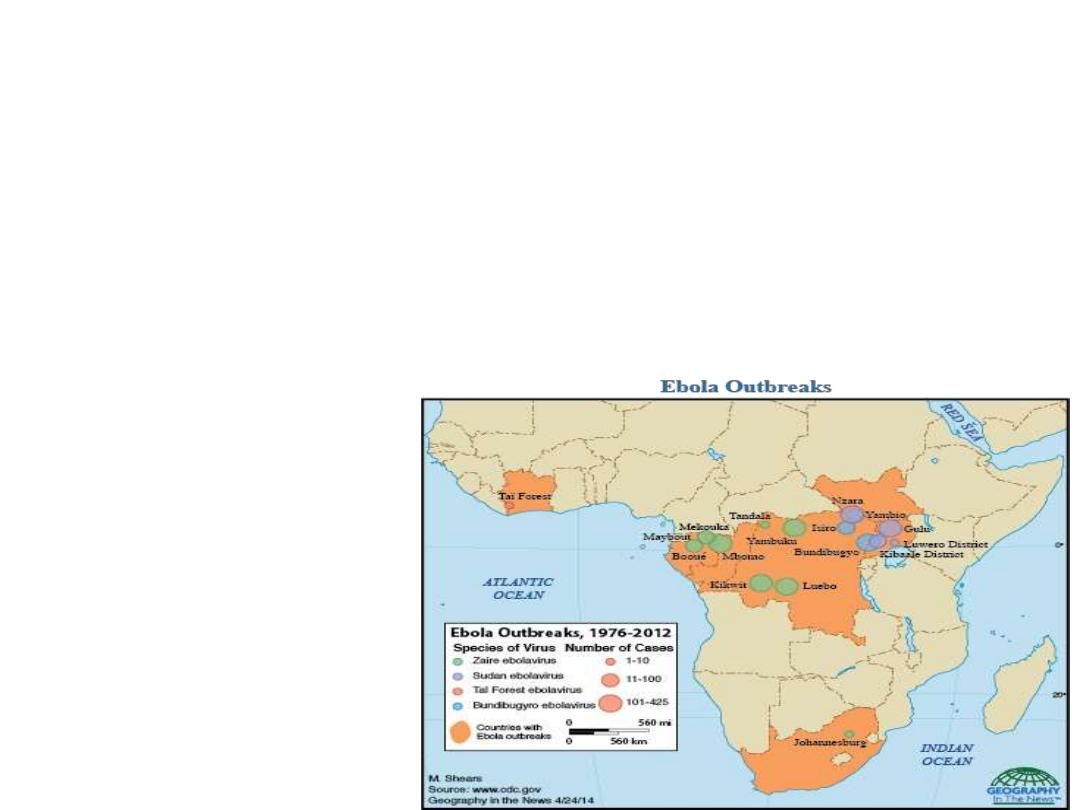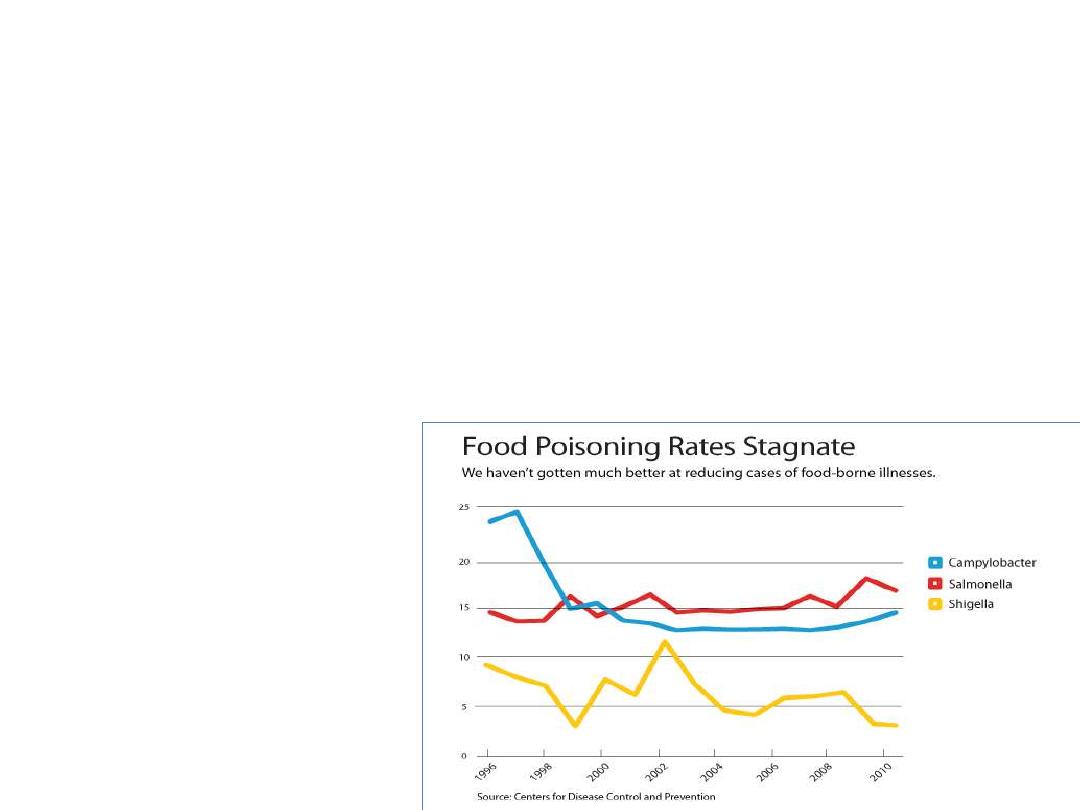
INVESTIGATION OF AN OUTBREAK
Dr. Nadia Aziz
C.A.B.C.M.
Department of community medicine

Objectives
1- Define what is an outbreak.
2- Explain what are the unique aspects of the
outbreak investigation.
3-Identify diseases requiring investigation.
4-Explain steps followed to contain and control
the outbreak.

DEFINITIONS
Outbreak
: Sudden occurrence of cases
beyond expected level in relatively limited
geographical area (usually
limited to a small
focal area
)
Epidemic
: covers larger geographical areas&
has
more than one focal point
.

DEFINITIONS
Outbreak epidemiology
: Study of a
disease cluster or epidemic in order to control
or prevent further spread of
the disease in the population.

Unique aspects of outbreak
investigation
1- There is a pressure & urgency to
conclude the
investigations quickly
that lead to hasty decision.
2- Data sources are often
incomplete & less
accurate
.
3-
Decreased statistical power
due to analysis of
small numbers.
4-
Publicity
surrounding the investigation –
community members may have preconceived ideas.

Diseases requiring investigation
1- Endemic diseases with
epidemic potential
e.g.
malaria, cholera, measles, hepatitis, meningococcal
meningitis.
2- Even a single case of a disease for which
eradication/elimination goals
have been set e.g. polio.
3- Rare but
internationally important
diseases with
high case fatality rates e.g. yellow fever.
4- outbreak of
unknown
etiology.

INVESTIGATION OF AN OUTBREAK
The response to an outbreak report must be
management of those infected
, and
containment of the outbreak
by interrupting
transmission of the infectious agent.

INVESTIGATION OF AN OUTBREAK
Steps in an outbreak response are
systematic
and based on
epidemiological evidence
despite
the fact that public and political reaction,
urgency and the local situation may make this
difficult.

Steps of outbreak investigation
The following steps are sometimes done concurrently:
1- Verify the diagnosis
2- Confirm the existence of an outbreak
3- Identify affected persons and their characteristics
- Record case histories
- Identify additional cases
_ Define and investigate population at risk

Steps of outbreak investigation
4- Formulate a hypothesis as source and spread of
the outbreak
5- Contain the outbreak
- Manage cases
- Implement control measures to prevent spread
6- Conduct ongoing disease surveillance
- Prepare a report.

INVESTIGATION OF AN OUTBREAK
Verify the diagnosis
Initial
notification
of an outbreak is often made
by a
health worker
who must collect as
detailed history
as possible from the initial
cases.

INVESTIGATION OF AN OUTBREAK
Verify the diagnosis
A
tentative differential diagnosis
may be made,
for example food poisoning or cholera, that
enables the investigator to anticipate the
diagnostic specimens
required and the kind of
equipment
to be used during the investigation.

INVESTIGATION OF AN OUTBREAK
Verify the diagnosis
The
laboratory
that will analyse the specimens should be
alerted at this stage. If initial cases have died, the extent
and need for
autopsies
should be considered.
For surveillance and control purposes, investigators must
agree on a common
surveillance case definition
(this
may not always correspond to the clinical case definition).

INVESTIGATION OF AN OUTBREAK
Confirm the existence of an outbreak
Some diseases, may remain unrecognized, new cases
may come to light, for instance, when
new treatments
attract patients
who previously relied on traditional
medicines.
Such ”
false outbreaks
” must be excluded through
attempts at
determining the previous incidence or
prevalence of the disease.

INVESTIGATION OF AN OUTBREAK
Confirm the existence of an outbreak
An outbreak can be demonstrated on a
graph
of incidence over time
and by a
map
of
Geographical
extension.

Confirm the existence of an outbreak
For diseases showing a
cyclical
or
seasonal
variation, the average incidence rates over
particular weeks or months of
previous
years
,
may be used as
baselines.

INVESTIGATION OF AN OUTBREAK
Identify affected persons and their characteristics
Record case histories
Information
about each
confirmed
or
suspected
case
must be recorded to obtain a complete understanding of
the outbreak.
Usually this information includes name, age, sex,
occupation, place of residence, recent movements,
details of symptoms (including dates and time of onset)
and dates of previous immunization against
childhood or other diseases.

Identify affected persons and their
characteristics
If the
incubation period
is known, information
on possible source contacts may be sought.
This information is best recorded on specially
prepared record forms.

Identify affected persons and their
characteristics
Identify additional cases
Initial notification of an outbreak may come from
a clinic or hospital, health centres, dispensaries
and villages in the area may reveal other cases,
sometimes with a range of additional
symptoms.

INVESTIGATION OF AN OUTBREAK
Define and investigate population at risk
The population at risk of infection must be identified;
this provides the
denominator
required and ensures that
remaining cases can be identified.
Overall
or
specific attack rates
(age-specific village-
specific) can then be calculated.

Define and investigate population at
risk
The population at risk may require
laboratory
investigation
(e.g. rate of nasal meningococcal
carriage in the population).
Microbiological typing and susceptibility to
antibiotics can then be used to develop
appropriate control measures.

INVESTIGATION OF AN OUTBREAK
Formulate a hypothesis as to source and spread
of the outbreak
Determine
why
the outbreak occurred,
when
it did and
what
set the stage for its occurrence. Whenever
possible the relevant conditions before the outbreak
should be determined.
For foodborne outbreaks it is necessary to determine
source, vehicle, predisposing circumstances and portal
of entry.

Formulate a hypothesis as to source
and spread of the outbreak
All links in the process must be considered:
i) disease-causing
agent
in the population
and its characteristics.
ii) existence of a
reservoir
.
iii) mode of
exit from this reservoir
or source.
iv)
mode of transmission
to the next host.
v) Mode of
entry
.
vi)
susceptibility
of the host.

Formulate a hypothesis as to source
and spread of the outbreak
All the links & calculations (attack rates) will
lead to the development of
new hypotheses
.
Test the hypothesis
by further investigation and
analysation of existing data or collection of
additional data (
case- control studies
).

INVESTIGATION OF AN OUTBREAK
Contain the outbreak
The key to effective containment of an outbreak
is a
coordinated investigation and response
involving health workers including clinicians,
epidemiologists, microbiologists, health
educators and the public health authority.
The best way to ensure coordination may be to
establish an
outbreak containment committee
early in the outbreak.

Contain the outbreak
After the epidemiological characteristics of the
outbreak have been better understood, it is
possible to
implement control measures
to
prevent further spread of the infectious agent.
However,
from the very beginning
of the
investigation the investigative team must
attempt to limit the spread and the occurrence of
new cases.

Control Measures
Many communicable diseases can be prevented
by:
1-
chemoprophylaxis or vaccination
.
2- Immediate
isolation
of affected persons can
prevent spread.
3- measures to
prevent movement
in or out of
the affected area may be considered.

Control Measures
Universal
precautions in patient
care are essential.
Whatever the urgency of the
control measures they
must also be explained
to the community at risk.
Population willingness to report new cases, attend
vaccination campaigns, improve standards of hygiene
or other such activities is critical for successful
containment.

Control Measures
If supplies of vaccine or drugs are limited, it
may be necessary to identify the groups at
highest risk
initial for control measures.

Control Measures
Once these urgent measures have been put in
place, it is necessary to
initiate more permanent
measures
such as
health education
,
improved
water supply
,
vector control
or
improved food
hygiene
.
It may be necessary to develop and implement
long-term plans for continued vaccination
after an
initial campaign.

Conduct ongoing disease surveillance
During the
acute phase of an outbreak
it may be
necessary to keep
persons at risk (e.g. contacts)
under surveillance
for disease onset.
After the outbreak has initially been controlled
,
continued community surveillance
may be
needed in order to identify additional cases and
to complete containment.

Disease Surveillance
Sources
of information for surveillance include:
i)
notifications of illness
by health workers,
community chiefs, employers, school teachers, heads
of families.
ii)
certification of deaths
by medical authorities.
iii)
data from other sources
such as public health
laboratories, entomological and veterinary services.

Disease Surveillance
It may be necessary to
maintain estimates of the
immune status of the population
when
immunization is part of control activities, by
relating the amount of vaccine used to the
estimated number of persons at risk, including
newborns.

Prepare a report
A report should be prepared at
intervals during
containment
if possible, and
after the outbreak
has
been fully contained.
Reports may be:
i)
a popular account
for the general public so that
they understand the nature of the outbreak and what
is required of them to prevent spread or recurrence.

Prepare a report
ii)
an account for planners
in the Ministry of
Health/local authority so as to ensure that the
necessary administrative steps are taken to
prevent recurrence:
iii)
a scientific report for publication in a medical
journal or epidemiological purposes.

Thank you
&
Good Luck
with Quiz

Quiz 1
What are the diseases requiring
investigation?

Quiz 2
What are the steps of outbreak
investigation? (enumerate at least 4
steps)
